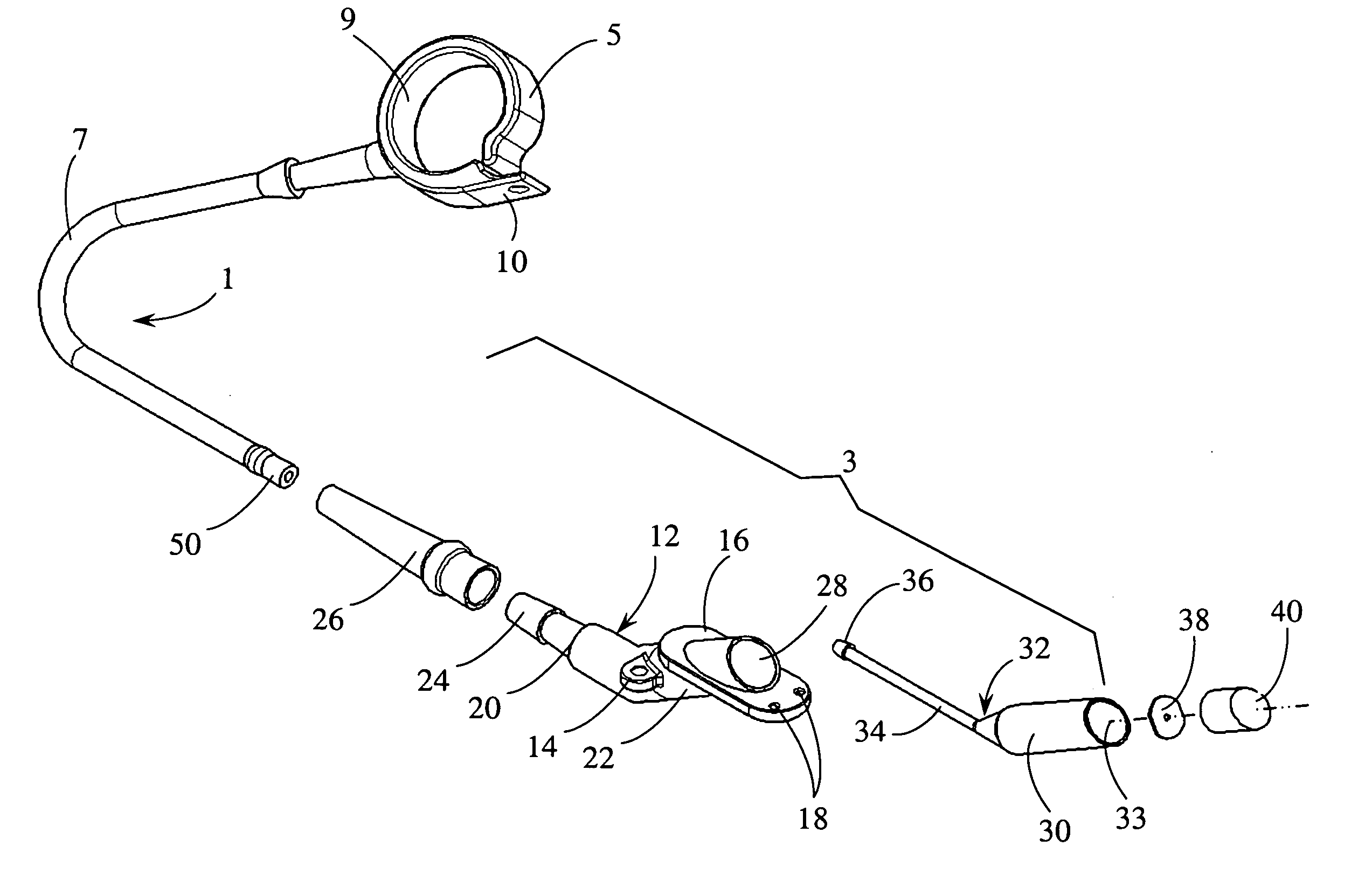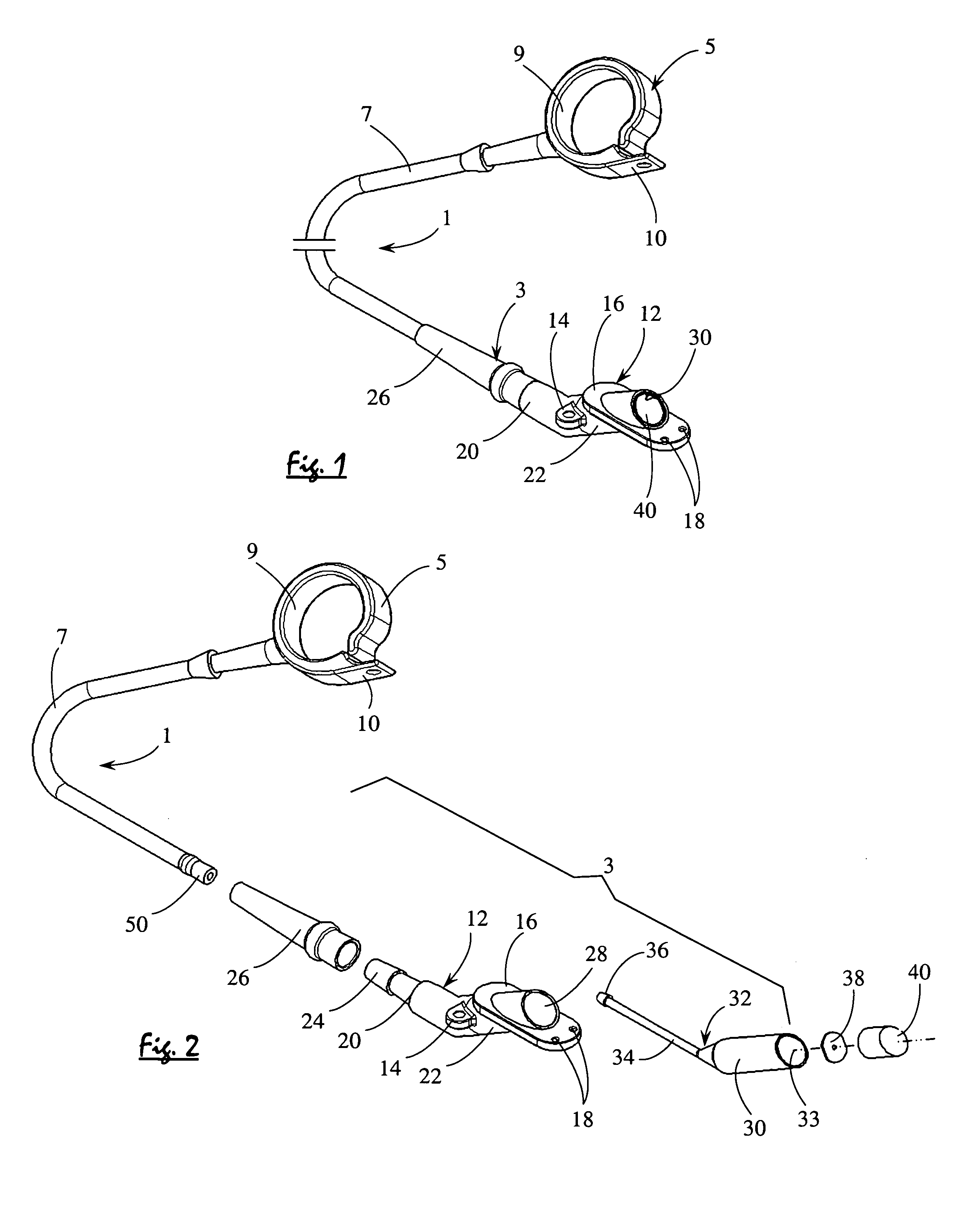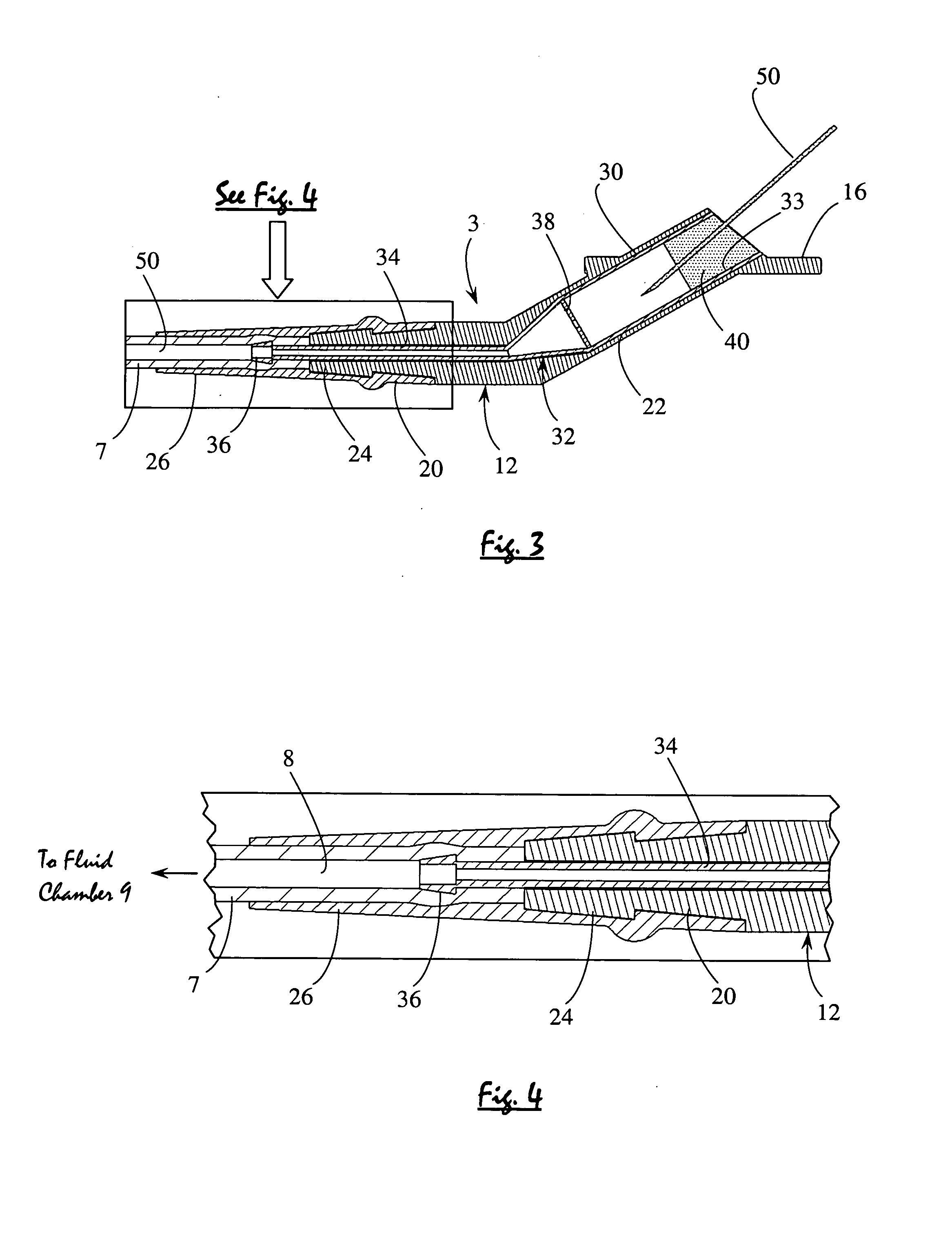Fluid port for an adjustable gastric banding system
a gastric banding system and fluid port technology, applied in the field of improved fluid port for use in the gastric banding system, can solve the problems of ultimate failure of the banding system, leakage of fluid into the patient's abdominal cavity, difficulty faced by clinical personnel, etc., to achieve rapid and easy palpation, weight reduction, and increase or decrease the occlusive pressure applied against the stomach
- Summary
- Abstract
- Description
- Claims
- Application Information
AI Technical Summary
Benefits of technology
Problems solved by technology
Method used
Image
Examples
Embodiment Construction
[0019]Referring initially to FIGS. 1 and 2 of the drawings, a gastric banding system 1 is shown including the improved fluid port 3 according to a preferred embodiment of this invention. The gastric banding system 1 of FIGS. 1 and 2 has particular application to be laparoscopically-implanted around the upper stomach of an obese patient seeking a procedure to help in weight reduction The fluid port 3 is configured so as to be quickly and easily located following implantation, whereby medical personnel can inject (or remove) a suitable (e.g., saline solution) fluid by which to selectively adjust the occlusive force generated by an inflatable constriction collar 5 of the banding system 1 which is located in surrounding engagement with the stomach of the patient.
[0020]Inasmuch as the inflatable constriction collar 5 and its fluid tubing 7 of banding system 1 are commercially available surgical devices, only a brief description thereof will be provided herein. Constriction collar 5, some...
PUM
 Login to View More
Login to View More Abstract
Description
Claims
Application Information
 Login to View More
Login to View More - R&D
- Intellectual Property
- Life Sciences
- Materials
- Tech Scout
- Unparalleled Data Quality
- Higher Quality Content
- 60% Fewer Hallucinations
Browse by: Latest US Patents, China's latest patents, Technical Efficacy Thesaurus, Application Domain, Technology Topic, Popular Technical Reports.
© 2025 PatSnap. All rights reserved.Legal|Privacy policy|Modern Slavery Act Transparency Statement|Sitemap|About US| Contact US: help@patsnap.com



